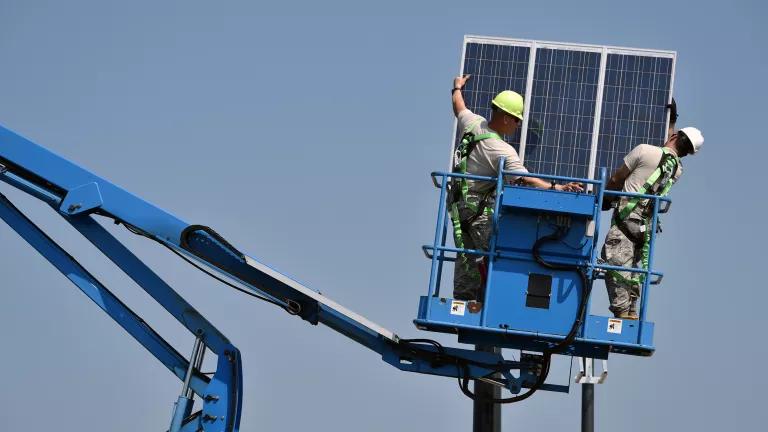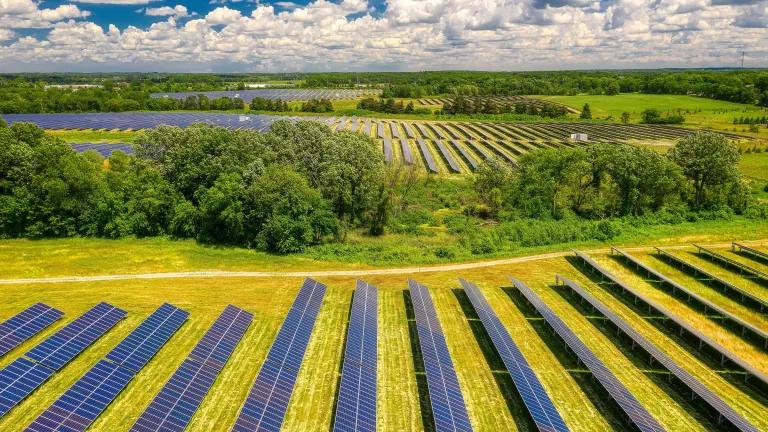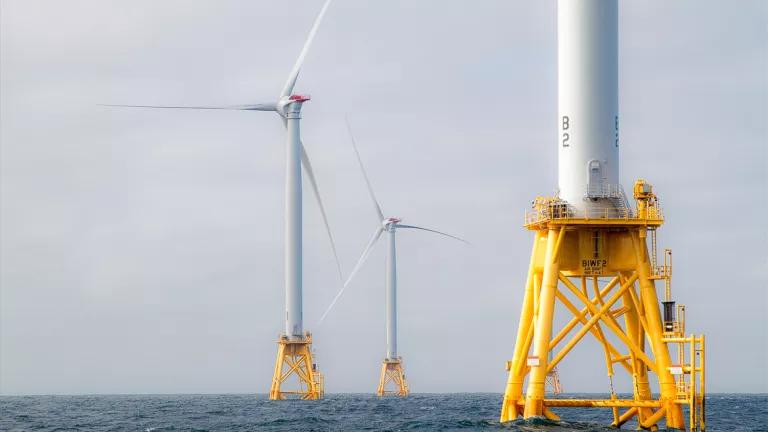A Banner Year for Northeast, Mid-Atlantic Climate Leadership

New York National Guard via Flickr/Creative Commons license
Part of NRDC's Year-End Series Reviewing 2018 Energy & Climate Developments
Northeast and Mid-Atlantic governors have done it again. After making huge gains in 2017 when they agreed to strengthen and extend the Regional Greenhouse Gas Initiative (RGGI)—the innovative climate program that since 2009 has helped slash regional power plant pollution in half—the region’s governors continued their trek toward climate progress this year with more progress on power plant goals, headway in expanding RGGI to new states, and a new bipartisan commitment to tackle the region’s next big climate challenge: transportation.
RGGI Continues to Benefit the Region
Over the last decade, the nine-state RGGI program, which includes Connecticut, Delaware, Maine, Maryland, Massachusetts, New Hampshire, New York, Rhode Island, and Vermont has had an impressive record of cutting pollution, creating jobs, improving public health, and growing the economy.
This trend continues. Economic experts at the Analysis Group calculate that over the last three years, RGGI added $1.4 billion and 14,500 years of employment to the region’s economy. Investments in energy efficiency, renewable energy, and other programs under RGGI also continue to save people money on their energy bills while further cutting emissions. Investments made through 2016 have already saved consumers more than $900 million on their energy bills, while avoiding the emissions-equivalent of 450,000 cars.
States Following Through on Post-2020 RGGI Commitments
In 2014, the RGGI states extended their program to ensure these benefits continue through 2020. The bipartisan RGGI agreement reached last year will extend them through 2030.
To ensure this post-2020 commitment is met, state environmental agencies, and in some cases legislatures, must adopt new rules to implement last year’s agreement. There is plenty of time to do so. Because the states already have rules on the books to cut pollution through 2020, they have until December 31, 2020 to adopt the post-2020 rules they agreed on last year.
But this comfortable deadline hasn’t stopped the states from moving ahead quickly. Four states—Delaware, Maine, Massachusetts, and Vermont—finalized the necessary rules in 2018, while three others—Connecticut, Maryland, and Rhode Island—have initiated the process and are well on their way to completion.
The two remaining states—New York and New Hampshire—will be up next in 2019. New York Governor Andrew Cuomo has already committed not only to adopt the updated rules, but to go further by also cutting carbon pollution from certain smaller but dirty “peaker” power plants not otherwise subject to RGGI’s emissions limits.
RGGI Expands
In 2018, RGGI’s influence has continued to grow. Virginia and New Jersey each proposed rules to participate in RGGI, which would grow the number of states to 11, while providing pollution reductions and consumer benefits in those states and enhancing the efficiency and impact of the program. We expect both states to finalize these rules in early 2019, and to see Virginia and New Jersey in the RGGI program starting in 2020.
With Virginia and New Jersey leading on RGGI expansion, the path is clear for other climate-conscious governors to join as well or adopt similar programs to curb their states’ emissions.
Next Up: Modernizing Transportation
Not satisfied with ending the year there, a coalition of Northeast and Mid-Atlantic leaders took another big step this week, when the governors of Connecticut, Delaware, Maryland, Massachusetts, New Jersey, Pennsylvania, Rhode Island, Vermont, and Virginia, and the mayor of Washington, D.C., made a groundbreaking commitment to modernize the transportation sector, create jobs, grow the economy, improve air quality, cut carbon pollution, tackle congestion, and provide a host of other community benefits.
A recent NRDC report, Transportation Reimagined: A Roadmap for Clean and Modern Transportation in the Northeast and Mid-Atlantic Region, provides a blueprint for how the states can improve transportation, including through investments in public transit and electric vehicle infrastructure in rural areas; commuter rail and safe, walkable and bikeable streets in the suburbs; and equitable, transit-oriented development and electric bus fleets in cities.
The benefits of doing so include:
- Reducing soot pollution from cars and trucks by one percent would save dozens of lives, prevent thousands of respiratory ailments, and save the region hundreds of millions of dollars a year. Eventually eliminating these emissions would avoid $35 billion in annual health costs.
- Lowering traffic congestion to speed up travel by just one mile per hour would provide nearly $19 billion a year in benefits through time savings, reduced fuel use, lower pollution impacts, and lower costs of doing business.
- Reducing gasoline use by switching to electric vehicles and providing alternatives to personal vehicles could save residents more than $100 billion at the pump through 2035.
- Investing in clean and modern transportation measures that cut carbon pollution from transportation 40 percent could create 125,000 jobs and add $17.7 billion a year to the region’s economy by 2030.
Because the transportation sector is the number one climate polluter in the United States—power plants are number two—these efforts promise to make a major contribution in the fight against climate change and help us avoid its worst effects.
The states will develop this regional clean transportation program over the course of 2019, and there are still significant steps needed to turn this commitment into reality and achieve the goals of making transportation more efficient, more affordable, more equitable, and lower polluting. We also need others in the region to join in these efforts—most notably New York.
By following through on their bold commitment to modernize transportation, Northeast and Mid-Atlantic states can ensure that 2019 is as important and impactful as their last two years have been.



